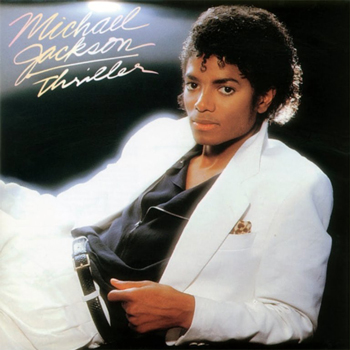Since 1997, the Dillinger Escape Plan, a band from Morris Plains, New Jersey, have consistently brought innovation to their live shows. Band members Ben Weinman, Liam Wilson, Greg Puciato, Billy Rymer, and Kevin Antreassian have built their career on making music that remains uncategorizable by any genre. Anyone that has seen them play knows why they’re considered to be one of the craziest live acts you’ll ever see. Diving from balconies into the crowd, breathing fire on stage, destroying drum kits, and performing while severely bleeding are only a few of the things they’ve pulled off on stage.
Throughout their career, they’ve never made accessibility a big part of their music; instead, they mix various elements of jazz, hardcore, metal, experimental rock, and other genres to make every album more creative than the last one. The Dillinger Escape Plan has consistently created music that’s just as unpredictable as its live shows.
The band is currently on their final tour in support of its new and final album, Dissociation, before a planned break-up in 2017. The contrast with its first album Calculating Infinity, released in 1999, shows just how far the band has come musically. As principal songwriter and lead guitarist, Ben Weinman, put it to the Independent:
“Everything about Dillinger was incorrect, certainly in terms of theory, we went against everything. Calculating Infinity was us effectively ripping up the music theory book...and maybe we finally took that to the nth degree with this album, we totally went against the rules. And that’s allowed for our personalities to come through much more on [Dissociation] because we didn't let anybody sway us at all.”
At Rawckus, we hear a lot more going on between the two albums:
Calculating Infinity
Recorded in 1999, this was easily the heaviest full-length album to be released by the Dillinger Escape Plan. It set a precedent for metal and hardcore by avoiding the formulaic techniques used by their peers, such as catchy choruses and heavy reliance on breakdowns. The nearly forty minutes that make up this album are filled with the technicality and abrasiveness that label them a leader of the “mathcore” movement. The album solidified the band’s mission to create music that pushed creative boundaries and forwent clichés.
The album kicks off with “Sugar Coated Sour,” which begins with multiple odd time signatures, abrasive screams, shredding and various chords. The listener is immediately thrown into this schizophrenic track without any warning while getting a good idea about how the rest of the album would function. The next few tracks continue with the same elements, not taking any time to slow down. Track four on the album, “*#...” provides the listener with a short break and is noticeably slower. It begins with quiet, but eerie voices before introducing some mid-tempo drum fills and guitar chords.
The album continues with “Destro’s Secret,” a track that shows more variation on the vocals; instead of the same mid-range screams, the track showcases some high-pitched screams and some group vocals late into this track. Additionally, it moves much slower than the first three, and some quieter guitar melodies can be heard alternating with more aggressive guitar riffs. Despite being a short track of just under two minutes, the track offers a little more experimentation than previously seen on the album.
It set a precedent for metal and hardcore by avoiding the formulaic techniques used by their peers, such as catchy choruses and heavy reliance on breakdowns.
Fast forwarding to track 10, the band expands on their melodic side with a track called “Weekend Sex Change,” which features some drumming, guitar melodies without any distortion, ominous electronics, and inaudible voices that can be heard in the background. Ultimately, this song seems to expand on the melodic side of “*#...” while jumping around between the various elements of the track, which makes every second of the three minutes of this track just as unpredictable as their more abrasive songs. Finally, the album ends with “Variations on a Cocktail Dress,” a nearly 8-minute song that seems to combine many of the style that the album utilizes. Like most of the tracks on Calculating Infinity, it begins with abrasive screams and schizophrenic guitar playing. Some melodic guitar riffs are present during parts of the song that don’t have vocals. The last few minutes of the song feature more of the ominous electronic sounds that remind you of Halloween, especially when coupled with screams that seem to be taken out of a horror movie.
It’s clear that an album this dense takes multiple listens to fully digest. While Calculating Infinity was definitely a fresh sound within heavy music, the band played it relatively safe compared to the level of experimentation that the band went to pursue and become recognized for in later albums. Future albums proved to cross over a wider array of genres and even showed the band had a melodic side that further added to the unpredictability of their music.
Dissociation
Seventeen years later, Dissociation shows the Dillinger Escape Plan taking everything that made Calculating Infinity special and pushing it further. The biggest difference this time around is that the band has found a way to fully integrate their melodic side into the album without anything seeming out of place to the listener, making it just as accessible as it is experimental.
The album kicks off with “Limerent Death,” and shows relentless aggression with metallic guitar riffs and mid to high-range screams at multiple tempos. Instrumentally, there seems to be a constant state of progression on this track, with no part of the song repeating. Even when the chorus of the song comes in again at around 2:20, the lyrics are screamed at a much higher-pitched sound with the instruments playing at a different time signature. This pushes the song towards progressive metal rather than experimental metal. It immediately sets the course for a cohesive album, especially when compared with the unhinged chaos in Calculating Infinity.
Unlike “Limerent Death,” the next track, “Symptom of Terminal Illness,” contains no screams. It begins with a slow guitar melody with smooth, baritone singing from vocalist Greg Puciato. Leaning towards rock rather than metal, this track serves as the ballad that puts some structure into the album with repeated melodies and a more straightforward verse-chorus song structure.
Dissociation shows the Dillinger Escape Plan taking everything that made Calculating Infinity special and pushing it further.
Tracks such as “Wanting Not so Much to as To” and “Surrogate” combine both extremes displayed by the first two tracks. While this was attempted at times within Calculating Infinity, cohesion was not found and often made the music jarring at times. As an example, “Surrogate” goes back and forth between heavy and melodic, but moments, such as 2:05 show, that the band is capable of transitioning smoothly between both. Most notable in this moment is Puciato’s ability to slow down and speed up his vocals as necessary to sync with the instrumental portion of the song. This not only adds more variation to the track, but it shows that heavy experimentation doesn’t have to take away from a song’s flow.
The Dillinger Escape Plan also shows they’re open to genres that you wouldn’t expect. On “Low Feels Blvd,” they manage to begin a song with the same level of aggression found in Calculating Infinity while jumping into jazz halfway throughout the song without being abrupt. Guitarist Ben Weinman plays a smooth solo that transitions the song from its abrasive side to a melodic side, where Puciato switches over from screaming to whispering his lyrics. Soon after, Weinman speeds up his playing and allows the band to transition back into its heavier elements for the last section of the song.
They take it a step further with tracks such as their instrumental electronic piece, “Fugue,” which utilizes drill ‘n’ bass elements normally found on an Aphex Twin track. Utilizing drum machines and synthesizers, the band speeds up its tempo from the beginning well past the middle of the song. It isn’t until the last minute that a dissonant guitar melody can be heard in the background.
While Calculating Infinity showcased promise and ambition, their magnum opus, Dissociation, the band has embraced melody, improved their songwriting abilities, and written an album that defines the band while incorporating every element of the sound. The Dillinger Escape Plan has not only honed its sound, but created a cohesive album that still embodies its willingness to experiment.
Just a taste from another album - One of Us is the Killer













